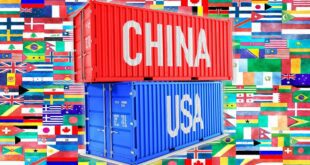…At the end of last year virtually every every single economist expected interest rates to rise this year as the Fed tapered their purchases and the economy improved… [but, in] fact, interest rates on the 10 year U.S. Treasury have been going down year to date (from 3% to 2.5% after rising from about 1.6% to 3% last year). The masses, going along with this crowd, got fooled…but we have been calling for a decline in interest rates for some time now due to world-wide deflation…and it couldn’t be clearer to us that this is the most likely scenario for the United States. Let us explain.
tapered their purchases and the economy improved… [but, in] fact, interest rates on the 10 year U.S. Treasury have been going down year to date (from 3% to 2.5% after rising from about 1.6% to 3% last year). The masses, going along with this crowd, got fooled…but we have been calling for a decline in interest rates for some time now due to world-wide deflation…and it couldn’t be clearer to us that this is the most likely scenario for the United States. Let us explain.
The above are edited excerpts from ComstockFunds.com as taken from an article entitled Inflation vs. Deflation.
The following article is presented by Lorimer Wilson, editor of www.munKNEE.com (Your Key to Making Money!) and the FREE Market Intelligence Report newsletter (sample here) and has been edited, abridged and/or reformatted (some sub-titles and bold/italics emphases) for the sake of clarity and brevity to ensure a fast and easy read. This paragraph must be included in any article re-posting to avoid copyright infringement.
The article goes on to say in further edited excerpts:
Last week the financial television shows interviewed numerous extremely sharp economists who all were concerned about inflation being the main problem this country will surely have to deal with over the next few months and years.
- One of them showed a chart of inflation being 1.1% at this time last year, 1.5% at the end of last year (2013) and 2% presently.
- He believed that this trend would continue moderately higher over the next few months and accelerate from there over the next few years.
- He did not think it would be a horrible hyper-inflation, but one that would need the Fed to deal with the rising prices.
- He also believed that Ben Bernanke was not as concerned about inflation as he should have been when he was the head of the Fed.
- Another economist stated that, “at a minimum deflation is dead.”
- He was concerned about the rising prices of food, energy, and rents.
- He also believed that wages are a lagging indicator and with four months in a row of rising non-farm employment greater than 200,000 (he assumed that May would also exceed 200,000) wages would rise much more than they did in the past and since wages represent 40% of the core CPI index.
- The other economists added more concerns to the above bringing up the fact that:
- the cost savings for prescription drugs is now over, and the prices of cars and clothing are now rising,
- global wages should rise from 2.5% to 3.5-4% as other central banks like the ECB and the Peoples Bank of China will be following us and the Japanese in easing as their economies slow down and that
- inflation rates are on the rise and the Fed is “behind the curve.”
…We, on the other hand, strongly believe that this onerous debt, that was generated from the early 1980s to present, will more than likely end with the debt collapsing into a deflationary depression or another “great recession” both here and abroad.
We would put a probability of around 60% on a deflationary outcome, but we also agree that if it doesn’t end in deflation, the next highest probability would be hyper-inflation and we would put about a 25% probability on that (with a 15% probability of muddling through with the debt continuing to expand for years).
Our problem with the inflationary scenario is the velocity of money and multiplier of money.
VELOCITY OF MONEY
As far as velocity goes, the turnover of our money supply has been declining since the middle of the 1990s from 2.2 velocity to 1.5 now, and as it continues to decline we will not experience the recovery strength we witnessed after every downturn since the “great depression” …
The M1 Velocity…has declined from 10.5 in 2007 to 6.3 presently. When the consumer is overburdened by debt he or she is afraid to continue borrowing and spending, and most banks are reluctant to loan money to anyone except the most credit worthy. Under this scenario the velocity will continue declining producing a lower than normal money supply and GDP.
The consumer debt relative to GDP jumped from a long term average of less than 50% for decades leading up to the middle of the 1980s where it grew to over 95% in 2008. We are now at 77% on the way back to the past 50% norm….Consumer debt to Personal Disposable Income (PDI) was under 60% for the decades of 1950 to the middle 1980s to almost 130% of PDI before the “great recession” starting in 2007. After peaking in 2007 the H/H debt to PDI has declined to about 105% presently on the way back to the norm of 60%.
MONEY MULTIPLIER
Another reason we are putting such a high probability of deflation (60%) versus inflation (25%) and muddling through (15%) is because of the money multiplier which determines how much the money supply grows relative to the monetary base.
You see, the Fed can only control the Monetary Base and the Federal Reserve’s balance sheet. The Fed balance sheet grew from $800 bn. in 2008 to $4.1 tn. now, and most inflationists believe that unwinding that much money will create hyper-inflation… [While] the Fed uses their tools of lowering the Federal Funds rate (the rate that the banks can borrow money from the Fed) and purchases of government bonds as well as mortgage backed securities (or Quantitative Easing –QE), they can also issue low costs Certificates of Deposit to the banks as well as reverse repos, but the main tools of the Fed are lowering rates and QE. However, these tools don’t directly control the Money Supply (MS). How much M2 grows is dependent upon the money multiplier and, if it continues down as it has lately,…the money supply will continue to be hampered by this multiplier.
“LIQUIDITY TRAP”
Another problem with the inflationary scenario is the “liquidity trap” we are struggling to escape from presently. This is a situation in which prevailing interest rates are low and savings rates are also low, making monetary policy ineffective.
In a liquidity trap, consumers choose to avoid bonds and keep their funds in the safest investments because of the prevailing belief that interest rates will soon rise.
- Because bond prices have an inverse relationship to interest rates, many consumers do not want to hold an asset with a price that is expected to decline.
- In this situation, banks sell their bonds to the Fed and receive cash, but instead of loaning the dollars out they deposit the money back with the Fed as excess reserves and therefore the dollars do not recycle or circulate.
- This prevents the money supply from growing, and eventually has a deflationary outcome.
You can supply all the money the Fed wants by increasing the Monetary Base, but if the public and corporations don’t want to borrow the money, the money supply is restricted and when you think there will be inflation, instead there will be disinflation and possibly deflation. The global environment for inflation is on the side of disinflation as the European Union just reported an inflation rate of only 0.5% and Germany’s inflation rate was only 0.6%. The ECB will attempt to address these deflationary indicators this week…and if China’s GDP growth continues on the downward growth path they could lead the way to emerging market weakness and disinflation or deflation.
[Given the above,]…it seems to us that… inflation will be postponed indefinitely and replaced by disinflation or even deflation.
Editor’s Note: The author’s views and conclusions in the above article are unaltered and no personal comments have been included to maintain the integrity of the original post. Furthermore, the views, conclusions and any recommendations offered in this article are not to be construed as an endorsement of such by the editor.
*http://comstockfunds.com/default.aspx?act=newsletter.aspx&category=SpecialReport (© 2014 Comstock Partners, Inc. All rights reserved.)
Related Articles:
1. “Liquidity Trap” is Fast Approaching
When velocity is low the nation essentially winds up in a “liquidity trap” which is a situation where monetary policy is unable to stimulate the economy either through lowering interest rates or increasing the money supply. This was the condition that Japan found itself enveloped in from 1989 to present. We expect the same problem in this country and hope (really hope) to be wrong. Words: 672 Read More »
2. We’re Headed for Crippling Deflation First & Then Rampant Inflation – Here’s Why
Are we headed for rampant inflation or crippling deflation? I believe that we will see both. The next major financial panic will cause a substantial deflationary wave first, and after that we will see unprecedented inflation as the central bankers and our politicians respond to the financial crisis. [Let me explain why I think that will unfold.] Words: 1025 Charts: 3 Read More »
3. 15 Questions & Answers Regarding Hyperinflation
It is difficult to say exactly when hyperinflation will hit a currency. However, I am convinced that the danger level is so high for most fiat money that it is worthwhile for everyone to increase their understanding of hyperinflation. This is the first part of a Hyperinflation FAQ for frequently asked questions or objections about hyperinflation. Words: 1600 Read More »
4. Now Underway: A Spiral of Debt Deflation Into a Bottomless Economic Abyss!
von Mises once said, “There is no means of avoiding the final collapse of a boom brought about by credit expansion. The alternative is only whether the crisis should come sooner as the result of a voluntary abandonment of further credit expansion, or later, as a final and total catastrophe of the currency involved” and just that is happening before our very eyes. Words: 2242 Read More »
Presently, the federal government is increasing spending that in the end may actually retard economic activity, and is also proposing tax increases that will further restrain private sector growth. In other words, fiscal policy is executing a program that is 180 degrees opposite from what it should be to stimulate the economy. How is it possible to get an inflationary cocktail out of deflationary ingredients? Words: 1461 Read More »
6. Deflationary Pressures In Economy Are Primary Concern of the Fed
Despite the Fed’s recent communications that they are planning to “taper” the current monetary program by the end of this year – the index is suggesting that their interventions, in one form or another, are unlikely to end anytime soon. The threat of “deflation” remains the Fed’s primary concern. Read More »
7. Deflation: What You Need to Know (and Fear) & How to Prepare for Such an Eventuality
All in all, deflation should be one of the most serious words in a commodity investor’s vocabulary and is something to always keep an eye on. While its presence may seem removed from our economy, the possibility always remains and preparation will be key to survive a deflationary environment. Read More »
 munKNEE.com Your Key to Making Money
munKNEE.com Your Key to Making Money


